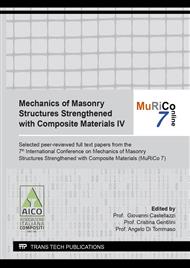p.82
p.91
p.98
p.105
p.115
p.123
p.130
p.136
p.147
Adhesion Analysis between Concrete Layers Generated by a 3D Printing
Abstract:
On 3DPC, the layers are made through a process where the cement mortar is extruded through a nozzle that follows a predetermined circuit. The classic method of formwork generates a uniform element, while 3D printing generates a non-homogeneous element. Such an innovative process offers new horizons to explore. One of these is the cohesion between the two printed layers and all their mechanical properties. The objective of this work is to study the shear action of two printed layers. To understand the mechanisms, the tested specimens were made in four different ways. The first using a formwork made for the occasion. The second way involves the creation of a printed specimen with a continuous printing path. The third has a time interval of about an hour between the second and third layer. The fourth also has an interval of one hour between the same layers with the addition of a special additive mortar used for the casting recovery. The results obtained reflect on the differences between different specimens and regulations. The differences between the specimens that are studied concern the single printed specimens, the formwork specimens and the printed ones. At a regulatory level, the results of the printed specimens are compared with the regulations concerning the same tests carried out on specimens made of masonry and mortar.
Info:
Periodical:
Pages:
115-122
Citation:
Online since:
April 2022
Authors:
Keywords:
Price:
Сopyright:
© 2022 Trans Tech Publications Ltd. All Rights Reserved
Share:
Citation:


